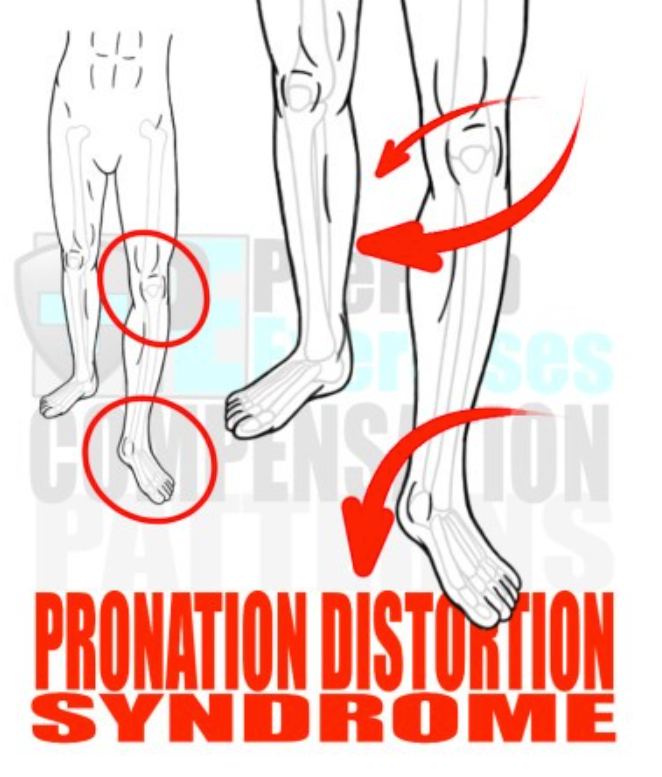Compensation Deficiency - Pronation Distortion Syndrome

When assessing an individual’s Biomechanical Integrity and Movement Quality, it is best to start at the bottom of the body as the feet serve as the platform upon which the rest of the body operates. Therefore, it is recommended to start by analyzing for the Pronation Distortion Syndrome
When the foot excessively pronates and the arch of the foot collapses inward toward the floor, the tibia (shin bone) also collapses inwardly causing a Valgus Knee movement, placing an inappropriate amount of stress on the knee, especially the ACL.
Furthermore, the femur (thigh bone) adducts or collapses toward the midline of the body, which creates tightness in the Vastus Lateralis (Lateral Quadriceps muscle), the Biceps Femoris (Lateral Hamstring muscle), and the Peroneals (Lateral Calf Muscles) as all three muscles eccentrically contract to help stabilize the knee joint. This pattern of compensation leads to the development of a Valgus Knee movement in squatting, lunging, jumping, running, and even standing.
Lastly, Pronation Distortion Syndrome can even cause Low Back Pain as the Hip Flexor complex becomes overactive in the body’s attempt to control the movement of the Femur (thigh bone) and stabilize both knee and pelvis. Eventually, overactive Hip Flexors anteriorly compress the Lumbar Spine and create either an Anterior Tilt of the pelvis and/or excessive Lordotic Extension of the spine, referred to as Sway Back.
RX: Start practicing a combination of soft tissue therapy and effective stretching techniques on the following overactive or tight muscles: Peroneals (Lateral Calf), Biceps Femoris (Lateral Hamstring), Vastus Lateralis (Lateral Quadriceps), Adductor Complex (Groin Muscles), Tensor Fasciae Latae (TFL – Hip Flexor) and Psoas (Hip Flexors). Also, practice soft tissue therapy on the Posterior Tibialis (Interior Calf Muscle) and the Gastrocnemius (Calf Muscle) to activate and induce the responsiveness of soft tissue in these muscles to properly align and supinate the foot, i.e. strengthen the arch of the foot.
Next, practice Activation exercises to strengthen and facilitate proper firing sequences of the following underactive muscles: Gluteus Medias (Lateral Hip Muscle), Posterior Tibialis (Interior Calf Muscle), Gastrocnemius (Calf Muscle) and the Intrinsic Foot Muscles.
Finally, practice a variety of exercises integrating these underactive muscles with larger Movement Patterns, including squatting, lunging, and running. Also, challenge stability, coordination, and balance with single-leg and/or Change of Direction (C.O.D.) exercises.
